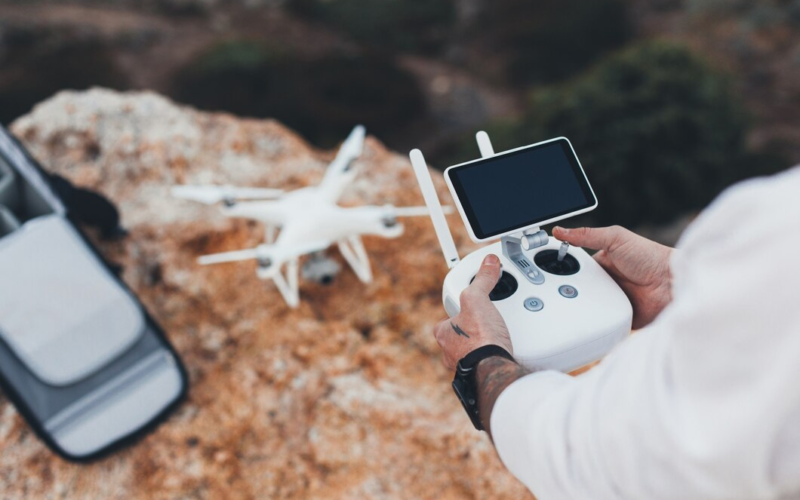In recent years, the integration of drone technology in video production has revolutionized the industry, offering filmmakers and content creators unprecedented capabilities to capture stunning aerial footage. The use of drones, or unmanned aerial vehicles (UAVs), has opened new avenues for creativity, efficiency, and cost-effectiveness, allowing video production companies to elevate their projects to new heights, both literally and figuratively.
The Rise of Drone Technology in Video Production
The incorporation of drones into video production has transformed the landscape of filmmaking, enabling filmmakers to capture dynamic and high-quality aerial shots that were previously unattainable or prohibitively expensive. Traditionally, achieving such shots required the use of helicopters or cranes, which involved significant logistical challenges and costs. However, with the advent of drone technology, aerial videography has become more accessible and versatile, providing filmmakers with a powerful tool to enhance their storytelling.
Advantages of Using Drones in Video Production
One of the most significant advantages of using drones in video production is the ability to capture unique perspectives and cinematic shots that add depth and dimension to the narrative. Drones can effortlessly maneuver through tight spaces, fly at various altitudes, and follow complex trajectories, allowing filmmakers to create visually captivating sequences. This flexibility is particularly valuable in capturing sweeping landscapes, dynamic action scenes, and immersive establishing shots.
Moreover, drones equipped with high-resolution cameras and stabilizing gimbals ensure smooth and professional-grade footage, even in challenging conditions. This technology allows video production companies to achieve a level of visual quality that meets industry standards without the need for extensive post-production stabilization.
Efficiency and Cost-Effectiveness
Integrating drone technology in video production also brings significant efficiency and cost-effectiveness. Compared to traditional aerial filming methods, drones are more affordable and easier to deploy. The reduced logistical requirements mean that production teams can save time and resources, allowing them to focus more on the creative aspects of the project. Additionally, drones can quickly set up and execute shots, making them ideal for time-sensitive productions such as live events, news coverage, and documentary filmmaking.
For a drone company, this efficiency translates into a competitive edge in the market. By offering drone services, a video production company can provide clients with high-quality aerial footage at a fraction of the cost of traditional methods, attracting a broader range of clients and projects.
Enhancing Storytelling through Aerial Footage
The use of drones in video production extends beyond capturing beautiful landscapes and establishing shots. Drones have the potential to enhance storytelling by immersing the audience in the narrative and creating a sense of scale and perspective. For instance, drones can follow characters through intricate environments, offering a bird’s-eye view of their journey and highlighting their surroundings in ways that ground-based cameras cannot.
In action sequences, drones can provide dynamic and fluid shots that amplify the intensity and excitement. Whether it’s following a car chase, capturing a thrilling stunt, or documenting a sporting event, drones can bring a sense of immediacy and engagement that keeps viewers on the edge of their seats.
Regulatory and Safety Considerations
While the benefits of integrating drone technology in video production are undeniable, it is essential to consider regulatory and safety aspects. Operating drones for commercial purposes typically requires compliance with aviation regulations set by authorities such as the Federal Aviation Administration (FAA) in the United States. Video production companies and drone operators must obtain the necessary permits and certifications to ensure safe and legal operations.
Safety is paramount when using drones, especially in populated areas or near sensitive locations. A professional drone company must prioritize safety protocols, conduct thorough risk assessments, and implement best practices to mitigate potential hazards. By adhering to these standards, video production companies can maintain a positive reputation and build trust with clients and stakeholders.
The Future of Drone Technology in Video Production
As drone technology continues to evolve, the possibilities for its integration in video production are expanding. Advancements in autonomous flight, AI-powered obstacle avoidance, and enhanced camera capabilities are pushing the boundaries of what drones can achieve. In the future, we can expect even more sophisticated drones capable of capturing complex shots with minimal human intervention.
Additionally, the integration of virtual reality (VR) and augmented reality (AR) with drone technology holds exciting potential for immersive storytelling. By combining aerial footage with interactive elements, filmmakers can create captivating experiences that engage and transport audiences in new and innovative ways.
Conclusion
The integration of drone technology in video production has undoubtedly revolutionized the industry, offering filmmakers and content creators unparalleled creative opportunities. Drones have become indispensable tools for capturing breathtaking aerial footage, enhancing storytelling, and improving efficiency. As technology continues to advance, the role of drones in video production will only grow, enabling filmmakers to push the boundaries of their craft and deliver captivating visual experiences from ground to sky. For any video production company, embracing drone technology is not just an option but a necessity to stay competitive and deliver cutting-edge content to their audience.
